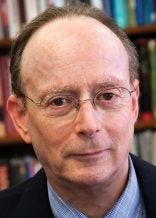The three-day annual conference of communal leaders known as the GA (General Assembly), held in Baltimore earlier this month, turned out to be a microcosm of its parent body, the Jewish Federations of North America: an impressive collection of committed, caring professional and lay people, spread too thin and lacking in focus, and giving the impression of following rather than leading at a critical juncture in Jewish life.
As someone who has attended, reported on and learned from just about every GA since 1974, I think it’s time for some radical rethinking of this once must-attend annual conference to help reverse its slow slide toward irrelevance.
I say this with a real sense of sadness and concern, not only because I recall the heydays of the GA, when it was the largest, most influential and dynamic conference on the Jewish calendar each year, but because its decline reflects that of JFNA, the umbrella group of the 157 federations in the United States and Canada.
I have great respect and admiration for so many involved in this noble enterprise, addressing the needs of the Jewish people. But by any number of indicators, the JFNA is fighting an uphill battle to maintain its significance.
Once acknowledged to be the primary engine of the organized Jewish community (first as the Council of Jewish Federations and later the United Jewish Communities), JFNA has been diminished in reputation and clout, buffeted by financial and personnel problems, and leaving its clients, the local federations, wondering if it’s worth the cost in dues.
Many annual federation campaigns around the country have been flat, or worse, in recent years, victims of the recession and shifting trends among donors. As a result, JFNA has been forced to cut both staff and major projects, like the National Jewish Population Study, the once-a-decade survey that provided valuable research for social planning.
More importantly, though, the organization’s core mission — to embody collective giving and serve as a central hub for raising and distributing charitable funds at home and around the world — is increasingly threatened by the proliferation of smaller, nimbler, hands-on nonprofits that have proven more appealing to a younger generation seeking direct involvement through their donations.
Defenders would point to JFNA’s quick and substantial emergency responses to the devastation of Hurricane Sandy here and the latest round of rocket attacks by Hamas in Israel to show the vital need for a strong, centralized communal effort.
But for critics, federations, with the notable exceptions of those in a few communities like New York, Boston and Chicago, are seen as old school and less effective than in decades past. By nature they are bureaucratic and slow to act, driven by a consensus model that tends to be more safe than dynamic in their decision-making.
In reality, large numbers of American Jews under 40 simply aren’t engaged seriously in Jewish life. And those engaged are likely to view the federations as their parents’ vehicle for charity.
Perhaps this change underscores the weakening of the concept of Clal Yisrael, or Jewish peoplehood, with data showing that fewer young American Jews adhere to the concept that all Jews are responsible for each other around the globe, the backbone of collective giving.
Where the federation system was once dominant in raising funds for causes in Israel, in the last two decades the dramatic increase of “American Friends of” Israeli organizations operating in the U.S., estimated to be about 700 now, has eclipsed the traditional model and accounts for about 80 to 85 percent of the donations going to the Jewish state, according to several sources.
Setting The
Jewish Agenda
The GA, which in the 1970s and ’80s was the meeting place each year for professional and lay leaders, sought and attracted top officials from a variety of American Jewish organizations, as well as representatives from diaspora communities. Its deliberations, resulting in a wide range of resolutions, charted the Jewish policy agenda for the coming year.
In more recent years, though, the conference has changed in shape, content and concept. Once seen as a kind of Jewish parliament for the diaspora, it reduced its schedule (from four days to about 48 hours) and narrowed its scope, focusing more on the nitty gritty work of federations, such as more effective fundraising.
With the GA now seen primarily as a trade show for the federation movement, a growing number of lay and professional leaders and activists from outside the system say they are less motivated to attend.
Whatever the official GA numbers, usually said to be about 3,000, it is clear that delegate attendance has gone down in recent years while AIPAC, the official pro-Israel lobby, has vastly increased its size to well over 10,000 delegates, becoming the prime conference at which to see and be seen each year in Washington.
In contrast to previous years, this GA had no keynote speaker from the administration in Washington or the cabinet in Jerusalem. Some suggest this is a sign of a growing gap between American and Israeli Jews and/or reduced GA influence. But JFNA officials attribute the difficulty of attracting top U.S. and Israeli leaders to timing, with the GA coming just after presidential elections here and during the campaign season in Israel.
Jerry Silverman, JFNA’s CEO, told me he was heartened that he has heard “more positive feedback on this GA than the last few,” and said he and his planning team are constantly seeking “to raise the bar.”
He said the conference is intended to have elements of a trade show since, after all, “it is put on and about federations.” But he hoped attendees would also come away with a “plus” factor, finding the GA a place for “up-and-coming and significant volunteer leadership as well as professionals from inside and outside” the system to “take back ideas” and encouragement to their communities.
No two people have the same experience at the GA, and you can’t please everyone.
I found the lack of a specific theme this year made for a diverse, less substantive program.
That’s not to say that there were no stimulating sessions. There were, including several effective plenaries, most notably the discussion between Elie Wiesel and Natan Sharansky on the success of the Soviet Jewry movement. But I felt the opportunity for the GA to invite a wide range of thought-leaders and to educate, entertain and inspire beyond its core constituency largely was wasted.
‘Conflict Averse’
Next year’s GA is set to be held in Jerusalem, which will provide its own dynamic in terms of exploring the vital relationship between Israeli and diaspora Jews.
But it’s not too soon to start planning for the 2014 GA.
I have two suggestions. First, don’t be afraid of controversy.
As one longtime American Jewish leader, who preferred not to be named, complained, the GA is “conflict averse.” He asserted that rather than avoiding difficult issues, from Israeli politics to investing limited funds in important projects, the conference would be enhanced by presenting sharp debates among experts.
Second, less is more. I would advocate changing the traditional format, which now has up to a dozen concurrent sessions, and scaling that down to no more than three or four, each devoted to a specific theme, or track. Delegates would register in advance for one of these tracks, which would feature the top specialists in a given field, and offer the opportunity to drill down over the course of the conference in a serious way.
At least one track should concentrate on improving our Jewish education system, from teacher training and compensation to day school tuitions to informal and adult programming.
The best and maybe only way to reinvigorate the GA is to offer excellence, value and meaning, approaching the challenges of Jewish life in ways that will carry over to the primary work of JFNA.
We can’t afford to continue along a path that brings us smaller returns from fewer people. We need to be more creative, reaching higher and digging deeper; our future as a caring community depends on it.
The New York Jewish Week brings you the stories behind the headlines, keeping you connected to Jewish life in New York. Help sustain the reporting you trust by donating today.





